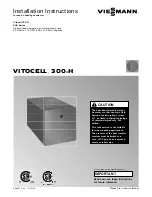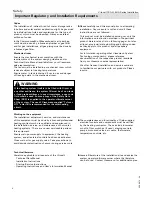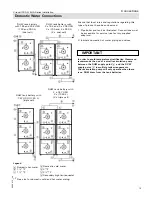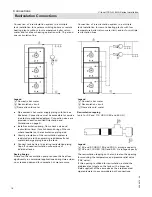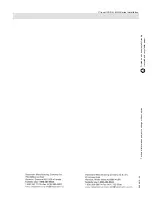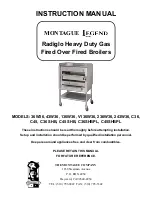
11
5696 675 - 04
Vitocell 300-H, EHA Series Installation
Boiler Water Connections
(Heat Exchanger Connection)
DANGER
Domestic hot water temperatures over 125°F (52°C) can
cause severe burns instantly or death from scalds.
Children, disabled and elderly are at highest risk of being
scalded. Feel water before bathing or showering.
Temperature limiting valves are available and must be
used where domestic hot water storage tank temperatures
exceed 140°F (60°C).
Connections
Maximum working pressure on heat exchanger side
up to 220 psig at 392°F (200°C) or a steam
pressure of 15 psig at 250°F (121°C)
Maximum working pressure on DHW water side
of up to 150 psig at 210°F (99°C)
1. Pipe together boiler and tank as illustrated.
Connections must be accessible for service (use
factory supplied adaptors). We recommend using
Viessmann Flexible Piping of stainless steel (accessory).
2. For: - boiler water supply temperatures over 203°F
(95°C) and
- 92 and 119 USG (350 and 450 L) tanks:
Remove plastic supply and return grommets
(grommets are left threaded).
3. Pipe supply line with an incline and install
componentry as follows:
4. Protect all domestic hot water drawpoints from
excessive water temperatures via a tempering valve.
5. Install DHW tank temperature sensor in sensor well
(see page 10).
6. Insulate piping.
WARNING
The operating aquastat and any secondary high limit aqua-
stat of the tank must be set such that the DHW
temperature inside the tank never exceeds 210°F (99°C).
Individual DHW Tank
Legend
A
Vitocell 300
B
Sensor/Operating aquastat well
C
Automatic air vent
D
Spring-loaded flow-check valve
E
Circulation pump
F
Boiler water supply
G
Boiler
H
Boiler water return
This is a simplified conceptual drawing only! Piping
and necessary componentry must be field verified.
Proper installation and functionality in the field is the
responsibility of the heating contractor.
IMPORTANT
Recommended piping of an individual tank
flow check valve, to stop gravity circulation of hot
water back to the boiler when the boiler temperature
is lower than the actual tank temperature
automatic air vent, at the high point from the boiler
supply to the tank heat exchanger
drain valve, on the boiler return piping from the
tank heat exchanger coil
isolation valve, on the boiler supply and boiler
return piping to the tank coil.

